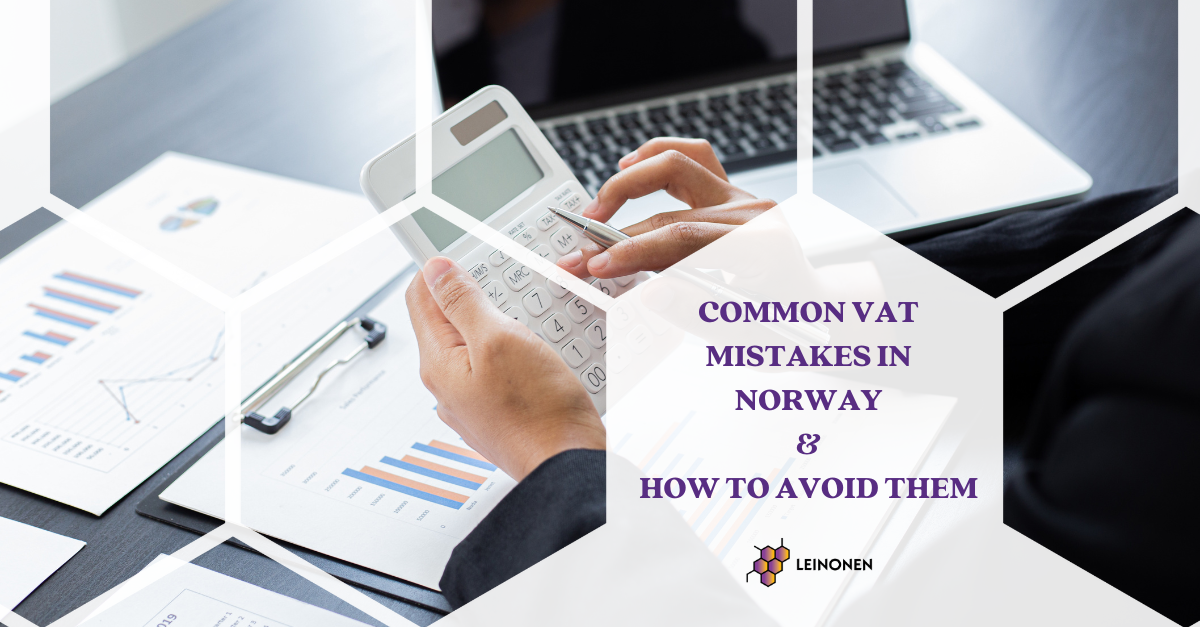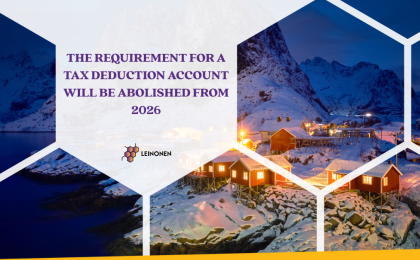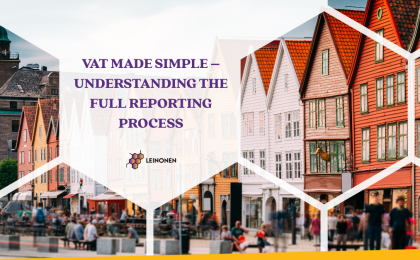Most people who live in Norway have heard the word VAT and those who run a company are familiar with VAT reporting. But what does that word actually stand for? What VAT rates do we have in Norway and when are they used? Let’s take a look at these and other questions in this article.
A brief introduction to VAT in Norway
VAT stands for value added tax and is called MVA in Norwegian. It is a tax on the purchase, sale, withdrawal and import of goods and services. All rules that apply for this tax are regulated in the value added tax law. It applies to the rules for when companies need to register in the Value Added Tax Register, how VAT needs to be calculated, what can give you a deduction and what VAT rates we have in Norway.
To be registered in the Value Added Tax Register a company needs to exceed NOK 50 000 in turnover within a year. When a company is registered there, you can add the abbreviation “VAT” (MVA) after your organization number, start invoicing with VAT and report VAT return. The reporting usually needs to be done every second month, but some companies do it once a year.
Value added tax was introduced in Norway in 1970, but the current value added tax law came into force on 1st of January 2010.
VAT rates
The standard VAT rate is 25% and applies for most goods and services. In addition, there is a 15 % rate for foodstuffs and beverages and 12 % on passenger transport, accommodation, cinema tickets, sport events, museums, etc.
In some cases we do not calculate VAT, but we differentiate between exemptions and exceptions. It sounds almost similar, but there are actually important differences between these 2 terms.
When we say that certain services are exemptions from VAT, we mean that a company doesn’t need to do registration in the Value Added Tax Register. This applies to health services such as doctors, dentists, psychologists and cultural services such as theatre and ballet performances.
For exceptions from VAT, we mean that we do not calculate VAT on the turnover and the rate is 0%. So you don’t need to add VAT on the sales invoices, but you still need to register in the VAT register and can claim VAT deductions on your expenses. Examples of exemptions are sale of used cars and books.
Frequent mistakes regarding VAT calculation
It is easy to make mistakes when you do VAT calculation and reporting. We have a lot of experience in correcting various errors and here are some examples.
Many companies (especially recently established ones) create a sales invoice with VAT before they have exceeded NOK 50 000 in turnover. In this case we recommend crediting this invoice and sending a new invoice without VAT.
Another mistake that comes up is that a company invoice without VAT, when it should have included VAT. In this case, you can also credit the entire invoice and send a new one with VAT. Alternatively, you can send a new invoice with only VAT without crediting the old one.
Many mistakes happens also when companies claim VAT deductions for things, they are not able to require deductions for. For instance, when hosting customers, VAT can not be deducted from the food expenses.
Using of wrong rate for expenses also happens, for example 25% instead of 12 % for passenger transport.
Another source of error is the reporting of remotely deliverable services purchased from abroad. VAT needs to be calculated and reported according to the so-called reverse charge. Our employees have a lot of experience with this type of reporting and will be happy to assist in such cases.
There are also many companies which make mistakes when they invoice international clients. The basic rule is that sales to foreign customers must be without VAT, but this requires that service or product is used outside of Norway’s borders. This means that if the customer’s delivery address is in Norway, the invoice must include VAT even though it’s a foreign customer!
Misunderstandings regarding exemptions and exceptions from VAT
Earlier in the article we presented the difference between exemptions and exceptions from VAT. So for instance healthcare or teaching services don’t need a VAT registration. However, the challenge comes when a company also work additionally with another type of activity which is not exempt from VAT. This activity provides a basis for calculating, reporting and paying VAT for the part of the turnover which is not exempt from VAT.
When it comes to exceptions from VAT, the rule is that the turnover gets a 0%-rate (for instance when selling books), and the company must be registered in the VAT register. Many people misunderstand these 2 terms and think that exemption is the same as exception, but that is not true. A company has the right to claim deductions on purchases, even if all turnover is excepted from VAT.
In addition, it is important to say that a company may have some turnover with VAT, some is exempted and some is excepted from VAT. It can seem confusing to most people, so it’s good to ask for professional advice before doing anything wrong.
Consequences of late VAT submitting and payments
It costs dearly to be late with the submission of the VAT return. If you do not report in time, a daily fine of NOK 638,50 will start running and the maximum amount can be up to NOK 63 850 (for 2024). Based on our experience, it usually takes some time before Norwegian Tax Administration will react. In this letter it usually says that enforcement fines will start one week after receiving the notice.
Interest on overdue payments will also apply and is 12,5 %.
Changes in the correction of errors in VAT return
A new VAT return was introduced in 2022. This made the way errors were fixed different than before. For VAT terms until the end of 2021, you should send an additional VAT return or a new correction for that term. This was done manually on skatteetaten.no. The new VAT return can be sent directly from an accounting program. If you have made a mistake and want to correct it, from 2022 you can reopen the period, make the change and send the new VAT return for the same term. But it is still possible to register a transaction in a new period as well.
Our experience with incorrect VAT reporting
After many years of experience we have seen lots of different cases of incorrect VAT reporting. It is often an employee in the company who has tried to do the reporting and without having enough expertise in the VAT regulations, things often go wrong. For instance we have seen a case where turnover which was reported was significantly lower than previously. It has been noticed by the Norwegian Tax Administration and the company had to go through a VAT check. Documentation was needed to be sent to control whether the report was correct. When it was discovered that submission was wrong, the company had to pay quite a big fine.
Conclusion
To summarize we would like to say that the regulations regarding VAT are quite complicated. To avoid mistakes, it is best to contact a professional accountant. We are ready to submit your VAT return!





